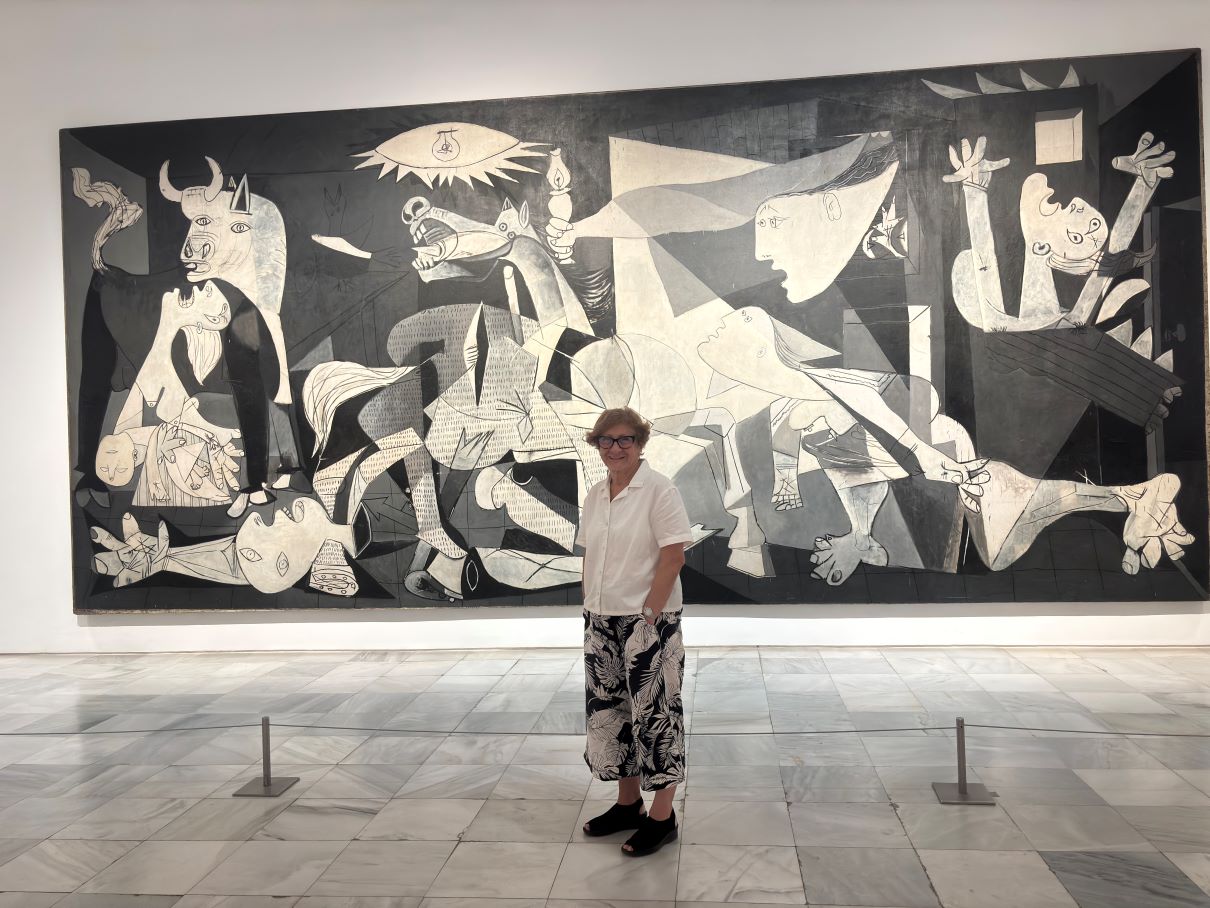Opening Event of Látkép 2025 – Public Lecture on Wednesday Afternoon, September 24, at the Festival Venue (1097 Budapest, Tóth Kálmán Street 4)
Date: Wednesday, September 24, 2025, 17:00.
Venue: HTK Main Lecture Hall
Please note that the public lecture will be held in Hungarian. English interpretation will not be provided.
Edit András: Beauty and the Beast
The Transfigurations of Picasso’s Guernica
The fame of Picasso’s Guernica is comparable to that of Leonardo’s Mona Lisa. Both works owe part of their iconic status to the stories surrounding them. The Mona Lisa gained extraordinary attention after being stolen from the Louvre, while Guernica became widely known through its international travels. For modern artists, the Mona Lisa has served as a point of reference—either to articulate their own visions or to challenge the canon it represents.
Created in 1937 and exhibited in the Spanish Pavilion at the Paris World’s Fair, Guernica—an anti-fascist mural—became a symbol of resistance against totalitarianism, violence, and war. It has functioned as the embodiment of political or activist art and has been adopted by various protest movements as a banner affirming their political convictions. The power of the work is reflected in the fact that, in 2003, during the U.S. invasion of Iraq, Colin Powell had the tapestry version of Guernica (displayed at the UN) covered during a press conference.
Today, the resurgence of totalitarian and post-fascist tendencies, along with the political appropriation and manipulation of images, makes the analysis of the political potency and resonance of visual art more relevant than ever.
This lecture focuses less on the aesthetic analysis of the painting and more on its ever-changing or expanding social and political context and significance.
 Edit András, art historian
Edit András, art historian
Photo: Hedvig Turai

